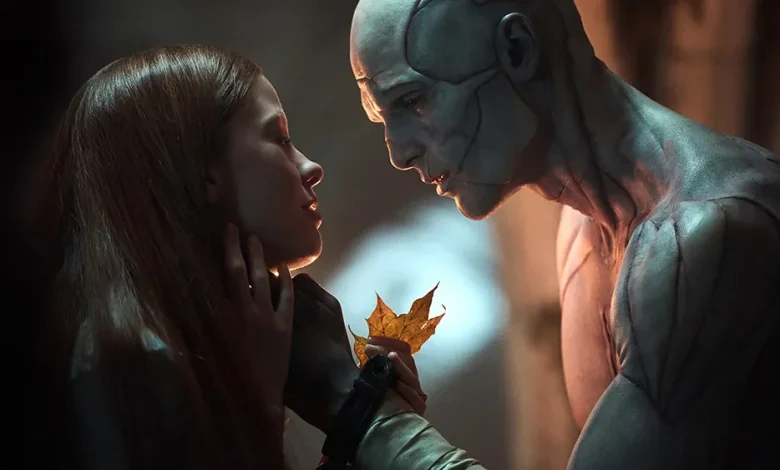‘Frankenstein’: How Close Is Guillermo del Toro’s Film to the Original Novel? A Mary Shelley Expert Answers Our Burning Questions

SPOILER ALERT: This article contains spoilers for Guillermo del Toro‘s “Frankenstein,” now streaming on Netflix.
Guillermo del Toro has often said that Mary Shelley’s 1818 novel “Frankenstein” is like his Bible. Now, he’s brought his vision to life with the release of his own film adaptation on Netflix, starring Oscar Isaac as mad genius Victor Frankenstein and Jacob Elordi as the Creature.
Of course, Shelley’s story is one of the most adapted tales of all time, spurring classic monster flicks like James Whale’s 1931 movie — in which the Creature was portrayed as it’s perhaps best known, a green-hued monster with a flat head and bolts in its neck — as well as more faithful retellings of the original text like Kenneth Branagh’s 1994 take “Mary Shelley’s Frankenstein.”
Though del Toro made it clear that his “Frankenstein” may not be the most accurate adaptation — the character of Elizabeth (played by Mia Goth) is essentially reinvented, Victor has been given a new backstory and characters like Victor’s friend Henry Clerval and servant Justine Moritz are eliminated — he instead set out to capture the novel’s heart.
“The usual discourse of Frankenstein has to do with science gone awry,” del Toro told Variety in a cover story in August. “But for me, it’s about the human spirit. It’s not a cautionary tale: It’s about forgiveness, understanding and the importance of listening to each other.”
So, just how well does del Toro’s version stack up against Mary Shelley’s original novel? We asked Julie Carlson, an English professor at the University of California, Santa Barbara and an expert on the British Romantic period and the Wollstonecraft-Godwin-Shelley family, for her thoughts.
What was your initial reaction to the film — did you enjoy it?
I did. I always like when serious artists take serious work seriously. I did feel, certainly in comparison to other renditions, there was real love for the book and for Mary Shelley’s brilliance. It was more faithful to the framed narrative, to the ways that Victor and the Creature get to tell their own story. And also, I thought it did a good job of capturing the language in the book. The Creature, at times, is very lyrical — not as lyrical as in the book, but still it’s clear there’s all kinds of philosophical pronouncements going on.
Del Toro’s film adds to Victor’s backstory by making his father a physician who abused him (and possibly let his mother die in childbirth so he could experiment on her). How does this shift affect the story’s themes?
It’s less about hubris, although of course that’s there, and more about shame. The way the father slaps [Victor] around when he can’t learn his lessons, and then he strikes the Creature when the Creature doesn’t learn as quickly as he wants him to — I think that’s interesting. It seemed to me there was a little less Faustian stuff about knowledge and power, and more about knowledge and shame and not living up to the name Victor or his father’s reputation. And that’s what he says [to his father]: You failed, because the mother dies, and I’m going to beat you [in cheating death].
Oscar Isaac as Victor Frankenstein in “Frankenstein.”
Ken Woroner/Netflix
One of the characters del Toro takes the most liberties with is Elizabeth. Instead of being engaged to Victor like in the book, she is betrothed to his younger brother William, who is grown up instead of a young child. What do you make of this?
The Elizabeth stuff is very different. Of course, in these days, I think it would have to go in that direction. She’s quite passive in the book; she doesn’t have much to do. Here, she’s very independent, she’s a scientist herself, an entomologist. It seemed to me that this was one of those moments where [del Toro] is really in the book, because there is a kind of throwaway line where Victor describes Elizabeth as “playful as an insect.” And so, it was very interesting that that’s her passion in the film. In general, people whitewash that line and say it means she was flitting around [like an insect]. But that’s another thing about the book that the film touches on, where Shelley gets much more at the ways in which [Victor] is lying to himself as well as to everybody else. And Elizabeth in the film points that out a couple times, especially when he comes to wish her and William well at the marriage and she says basically, “No you don’t.” So she, in the film, articulates Victor’s kind of delusional qualities in the sense of the need to present himself a certain way.
There’s also been much discussion about Elizabeth’s relationship with the Creature in del Toro’s film. In the book, they never meet until he murders her on her wedding night to Victor out of revenge. In the movie, they interact several times, she’s the only one to show him empathy and eventually dies protecting him. Did you find the connection between them to be romantic and do you think that diminishes Shelley’s message at all?
I think she identifies with him. One of the first things she says to him is, “Are you hurt?” Yes, there’s a real connection, but it’s not so eroticized for me. She does say, when she’s dying, “Love is brief; I am glad I found it with you.” So maybe, yeah, it skirts those edges. But I think a couple of times she says, “I’m odd,” because she’s an entomologist and no one understands her. So I think there is a sympathy between the Creature and Elizabeth that is about being a subordinated figure. It’s hard to take it as seriously in the film, just because she’s an aristocrat, but I think that’s more the connection. For Mary Shelley, it’s such a patriarchal world in the book. All the women — the mother, Elizabeth and Justine — are basically just sacrificed to patriarchy. And I like that del Toro doesn’t try to make it quite so heavy-handed like that. But I think that’s part of what their connection is.
Jacob Elordi as the Creature and Mia Goth as Elizabeth in “Frankenstein.”
©Netflix/Courtesy Everett Collection
As you mentioned, a large theme in the book is the persistent violence against women and unfair treatment of oppressed people. Did you feel this was still communicated in the film?
I think the film downplays what was so strong in Shelley’s “Frankenstein”: the social critique. [The film] is a structural critique. It’s more about war, militarism, capitalism — which is fine, I mean that is something we need to be worried about. But in the book and in other films, the sympathy for the Creature is about how nobody can stand him because of how he looks. It’s about how people read you. And the film doesn’t do that, certainly not at the beginning. In the book, Victor runs away as soon as the Creature opens his eyes because he’s so horrified. [In the movie], he parents for a while and only leaves when he gets frustrated. So in a certain way, that would not be true to the book, but [it is] in the way that Shelley is really thinking about maternity, paternity and what one owes to one’s progeny, whether it’s a book or a baby. But the way that “Frankenstein” often is read is about the socially oppressed. I’d say [the film is] less overtly about women’s oppression, enslavement — that’s less of its concern, although it’s there.
Del Toro’s film features one of the most human-like Creatures yet, and we don’t see him go on quite the killing rampage as in the book, which stirs up more sympathy. What are your thoughts on this difference?
I do really like that he humanizes the Creature and does a lot more with face-to-face communication. It’s almost like [French philosopher Emmanuel] Levinas in that way: when you behold the face of the other, you can’t murder them. But it skirts over some of the questions of responsibility that I think Mary Shelley already, even at 19, is wondering about. People keep trying to shoot him [in the film], but it’s not like we are to fear him. And we are to fear him. It’s not because he’s ugly — but for Shelley, if you turn something loose in the world, that is fearful.
Jacob Elordi as the Creature.
©Netflix/Courtesy Everett Collection
One of the parts of the book that isn’t usually put to screen is the Creature’s time with the De Lacey family and the blind old man. What did you think of this inclusion?
I think that’s one of the most faithful to the book. I am very interested in the notion of friendship in my work, and it really played that up. That was very interesting to me — that he emphasized that so much and as a way outside of, say, heterosexual or even homoerotic transfers. The film is not very sexual in any way, so you don’t really feel that’s a big preoccupation, but friendship was a big thing at least in that scene.
Compared to other film adaptations of “Frankenstein,” how does del Toro’s measure up overall?
It’s closer to the multi-layered nature of Shelley’s text. It really does divide the film like the book and frames it in the same way. And it’s really not a horror film, it’s a gothic film. I think some of the other film versions also are interested in the big questions, but they seem to treat them serially or mainly about one thing or another, whereas this one does try to get at various components of what the book is after — but not always successfully. I think many of the film versions aren’t trying to be faithful to Mary Shelley. I would certainly say it’s more like the book, and it’s trying to honor not just the book, but Mary Shelley and that whole group [Percy Shelley, Lord Byron, etc.].
This conversation has been edited and condensed.





